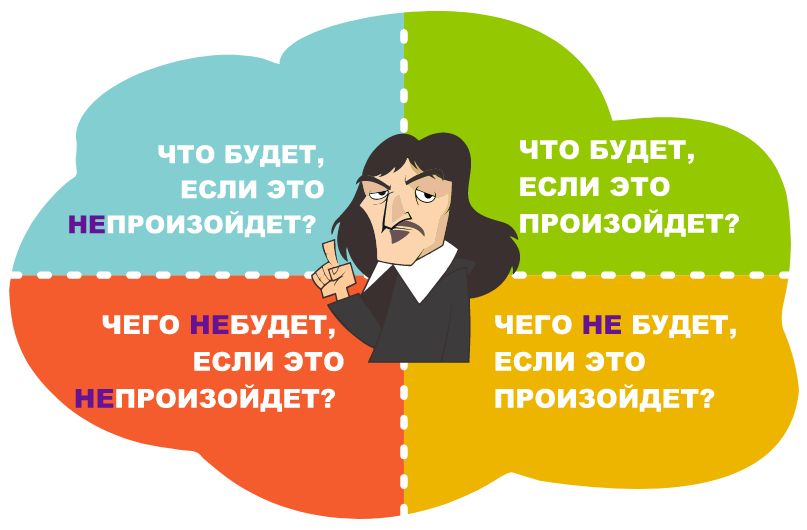Descartes’ Square as a Decision-Making Technique
In today’s world of high technology, cutting-edge developments, and a fast-paced lifestyle, we are constantly faced with the need to make decisions. Every day, we have to choose between countless options, relying on our own skills, methods, and decision-making techniques—most of which are based on our life experience, opinions, and perspectives. But are our usual ways of making decisions always effective? The answer is: not always.
The decision-making technique discussed in this article isn’t magic, but it’s so adaptable and easy to use that it’s considered one of the best available today. It’s called “Descartes’ Square.”
To clarify, the author of this technique is René Descartes—a French philosopher, physiologist, physicist, mechanic, mathematician, and the founder of algebraic symbolism, analytic geometry, and the philosophical method of radical doubt.
What Is Descartes’ Square?
Descartes’ Square is a straightforward decision-making tool that requires very little time to use. With its help, you can identify the most important criteria for your choice and evaluate the consequences of any decision you might make.
Typically, when faced with a decision, people focus on just one or two aspects, which can lead to a dead end and cause them to overlook other important factors. Standard thinking often leads us to ask only one question: “What will happen if this happens?”—in other words, we act and then evaluate the feedback. However, experience shows that it’s better to think things through thoroughly before acting. Descartes’ Square is designed to help you do just that—not just by considering a few options in your head, but by writing everything down on paper, following a specific process.
For example, imagine you want to change your career (get a new job, start your own business, go freelance, etc.), but you’re plagued by doubts. You see the advantages of the new path, but you’re unsure about stepping into the unknown, which makes you hesitate. By using Descartes’ Square, you can look at your situation from four different perspectives (we’ll return to this example below).
How to Use Descartes’ Square
To use Descartes’ Square, you’ll need a sheet of paper and a pen or pencil. Once you’re ready, answer the following four key questions. Think of these as four viewpoints from which you can examine your problem to get the most objective understanding. It’s important to write down as many answers as possible for each question—this will help you consider every aspect of your decision.
- What will happen if this does happen?This question is about identifying the benefits of getting what you want. “This” refers to the decision you’re considering. Since this is the most obvious question, make sure to go beyond your first thoughts and list as many positive outcomes as you can. These answers will serve as your motivation for making the decision.
- What will happen if this does NOT happen?This question is about finding the benefits of not getting what you want. In other words, what will happen if you decide not to go through with your decision and things stay as they are? Write down all the advantages of your current situation that you wouldn’t want to lose.
- What will NOT happen if this does happen?This question is about identifying the downsides of getting what you want. In simple terms, these answers represent the price you’ll pay for making your decision.
- What will NOT happen if this does NOT happen?This question is about finding the downsides of not getting what you want. When answering this fourth question, you’re eliminating the remaining “nots” that might be holding you back. At this stage, it’s best to answer quickly and trust your intuition.
In reality, Descartes’ Square can be applied not only to career decisions but to any area of life. The key is to always write down your answers instead of just thinking them through. Otherwise, you might get confused, and your subconscious may ignore the word “NOT,” leading to mistakes. So, always use paper and pen—you can even print out a large version of the Square and write your answers in each section. The act of writing helps turn your thoughts and ideas into logical, concrete arguments, making your decision-making process much clearer.



